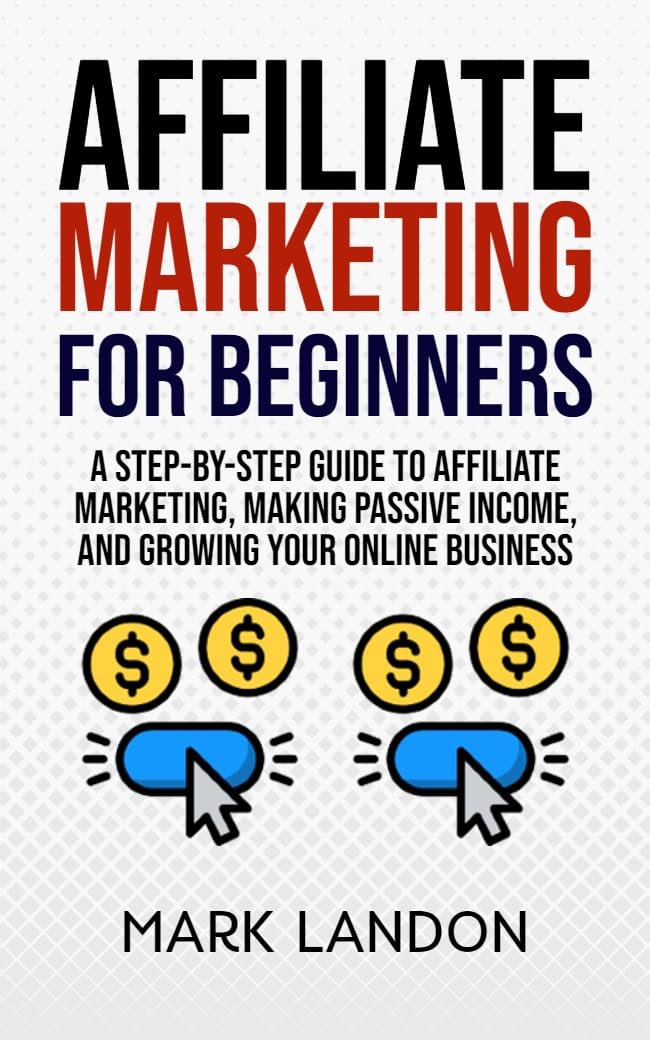
Affiliate Marketing for Beginners: Step-by-Step Guide, Best Programs for 2025, and Key Comparisons
Estimated reading time: 15 minutes
Key Takeaways
- Affiliate marketing is a performance-based model that pays commissions for referred sales.
- Beginners benefit from low startup costs, no inventory, and easy entry into the digital economy.
- Choosing a niche aligns your promotions with target audiences and builds credibility.
- Best affiliate programs for 2025 focus on relevance, fair commissions, and robust tracking.
- Comparing affiliate marketing vs dropshipping clarifies differences in risk, logistics, and control.
Table of Contents
- Introduction
- What Exactly is Affiliate Marketing?
- How to Start Affiliate Marketing: Your Step-by-Step Beginner’s Guide
- Choosing Your Niche
- Setting Up Your Platform
- Joining Affiliate Programs
- Creating Valuable Content
- Tracking & Optimizing Your Efforts
- Best Affiliate Programs 2025
- Affiliate Marketing vs Dropshipping
- Affiliate Marketing Tutorials & Learning Resources
- FAQ
Welcome to your comprehensive guide on affiliate marketing for beginners! Whether you're looking for an extra income stream, supplementing your side hustle, or exploring new digital opportunities, you've come to the right place. Affiliate marketing stands as one of the most accessible and rewarding ways to earn online today. In fact, it powers billions of dollars in transactions each year
(source on affiliate marketing in 2025;
another beginner-friendly affiliate guide).
Think of it like earning a commission every time you bring a successful customer to a merchant, using your unique tracking link.
This guide explores everything from the basics of how affiliate marketing works to practical steps on
how to start affiliate marketing, comparing affiliate marketing vs dropshipping,
revealing insights into the best affiliate programs for 2025, and pointing to helpful
affiliate marketing tutorials. By the end, you'll confidently begin your own affiliate marketing adventure.
What Exactly is Affiliate Marketing?
Affiliate marketing is a performance-based marketing approach. A company (the merchant) pays you (the affiliate) for referring it customers who take a desired action (like a purchase or signup).
According to
Coursera’s affiliate marketing article
and
this affiliate marketing guide,
the merchant only pays when your recommendation results in a measurable conversion. You don't store inventory or manage shipping — you simply act as a connector.
Key players in affiliate marketing:
- Affiliate (Marketer): You — the promoter who shares unique affiliate links
(beginner affiliate marketing details;
another reference). - Merchant (Advertiser): The business selling the product or service
(merchant details). - Commission: The fee paid for successful referrals
(FirstSiteGuide info). - Affiliate Link: Your unique URL that tracks referrals
(GenieLab article;
FirstSiteGuide reference).
For beginners, it means you can enter e-commerce without heavy upfront costs or fulfillment worries. You just choose a relevant product, embed your affiliate link in authentic content, and earn when readers buy.
How to Start Affiliate Marketing: Your Step-by-Step Beginner’s Guide
Building an affiliate marketing business (or a side-hustle) involves several actionable steps. It can feel daunting at first, but if you break it down, you'll make steady progress. Here’s the typical roadmap:
1) Choosing Your Niche: The Foundation of Your Affiliate Venture
Your niche is your unique focus. Thoughtful niche selection helps you tap into a clearly defined audience with shared interests. This fosters authenticity, credibility, and more precise product filtering.
Steps to pick a niche:
- Passion Filter: Choose something you genuinely care about.
- Audience Filter: Make sure others want and need info or products in this space.
- Market Research: Check out existing affiliate programs or popular keywords.
- Competitor Analysis: Look at blogs or channels in your niche to learn from them.
2) Setting Up Your Platform: Your Stage for Success
You'll need a platform (like a blog or YouTube channel) to share content and affiliate links. Popular choices:
- Blogging: Perfect for in-depth reviews, tutorials, and SEO-driven traffic.
- Social Media: Quick engagement on Instagram, TikTok, Facebook, etc.
- YouTube: Great for product demos and face-to-face tutorials.
- Email Marketing: Building a subscriber list for direct promotion.
3) Joining Affiliate Programs: Finding Your Income Partners
Affiliate programs are the connections between you and merchants. Some popular platforms:
- Amazon Associates: Vast product selection.
- ShareASale: Diverse categories, robust tracking
(reference). - CJ Affiliate: Large global brands, also known as Commission Junction.
Evaluate programs by commission rate, cookie duration, product relevance, and strong merchant reputation
(reference here).
4) Creating Valuable Content: The Heart of Your Affiliate Strategy
People click affiliate links if they trust you and find your content genuinely helpful. Integrate links naturally in your:
- Product Reviews & Tutorials: Show pros/cons, real-life use cases.
- Educational Guides: Offer insights plus relevant product mentions.
- Listicles & Comparisons: “Top X for…” to help buyers decide quickly.
- Personal Stories & Experiences: Build rapport via relatability.
5) Tracking & Optimizing Your Efforts: Maximizing Your Performance
Data-driven adjustments are key. Use affiliate network dashboards and tools like Google Analytics to see where clicks and conversions come from
(tracking reference).
Tweak your strategy based on performance insights, focusing on content that leads to sales and long-term growth.
Best Affiliate Programs 2025: Which Networks to Explore
Ready to find the best affiliate programs 2025? The “best” depends on commission rates, cookie duration, and brand reputation
(guide).
Look for:
- Amazon Associates: Ideal for broad product coverage.
- ShareASale: Wide variety of merchants, easy to get started.
- CJ Affiliate: High-quality brands worldwide.
- Specialized Networks: Some niche programs offer better payouts if well-aligned with your audience.
Always match the program with your niche. If your audience wants eco-friendly kitchenware, for example, select relevant eco-focused affiliate partners. Diversify to maximize potential and reduce dependence on a single source.
Affiliate Marketing vs Dropshipping: Key Differences Explained
Another popular online model is dropshipping. Unlike affiliate marketing, you effectively run your own store and forward orders to a supplier, who ships to customers directly.
Running dropshipping means you handle customer service, brand-building, and shipping issues.
Affiliate marketing generally requires less overhead — you don’t manage inventory or order fulfillment.
Affiliate Marketing vs Dropshipping — choose affiliate marketing if you prefer focusing on content creation with fewer operational headaches. Choose dropshipping if you want more control and are ready to handle the logistical challenges.
Affiliate Marketing Tutorials & Learning Resources: Getting Educated
Mastering affiliate marketing is an ongoing process. Continuous learning keeps you ahead of algorithm changes and best practices. Several affiliate marketing tutorials and resources help you grow:
- Coursera – Affiliate Marketing Course:
Beginner-friendly guide reference.
Offers fundamentals on building relationships and analyzing performance. - Meta Social Media Marketing Certificate:
Social-based affiliate insight. - FirstSiteGuide:
Detailed affiliate marketing tutorials. - TheGenieLab Blog:
Articles on affiliate marketing best practices.
Other learning avenues:
- Blogs & YouTube Channels: Ongoing updates on SEO, content marketing, affiliate strategies.
- Online Communities: Reddit and Discord groups can offer real experiences and quick peer support.
Stay updated with industry changes, read platform terms, be authentic, and monitor results diligently. Also, consider these internal links for broader digital side-hustle insights:
9 Best Online Side Hustles to Escape the Matrix,
How to Make $1 Million in 365 Days, and
Launch Your Own White Label AI Calling Agency.
Conclusion & Call to Action: You now have a thorough view of affiliate marketing for beginners. It’s an exciting world with accessible entry points, minimal risk, and potentially huge rewards. If you’ve been wondering how to start affiliate marketing, this step-by-step guide should set you on the right track. Remember:
Pick a niche you’re passionate about, create helpful content, and align yourself with reliable programs.
Keep learning and refining — that’s the real secret to success.
Frequently Asked Questions
- Q1: How do I choose the right Affiliate Program?
Research the merchant’s reputation, commission rates, and cookie duration. Ensure the product fits your niche and audience. - Q2: What is the biggest challenge for Affiliate Marketing Beginners?
Typically, driving consistent, targeted traffic is the hardest part. Once you master attracting your ideal audience, conversions improve. - Q3: Do I need a website to start?
Not necessarily. Some people use social media or YouTube, but a dedicated website or blog often gives you more control and credibility. - Q4: How long does it take to profit?
It varies. Expect to invest time in creating content and optimizing your strategy. Some see results in a few months; for others, it can take longer. - Q5: Is Affiliate Marketing better than Dropshipping?
It depends on your preference. Affiliate marketing is simpler in logistics; dropshipping offers more control in building a brand. Each has pros and cons.


